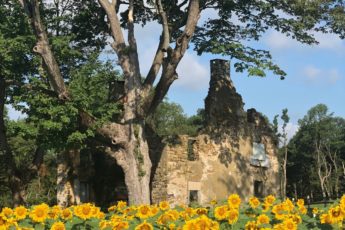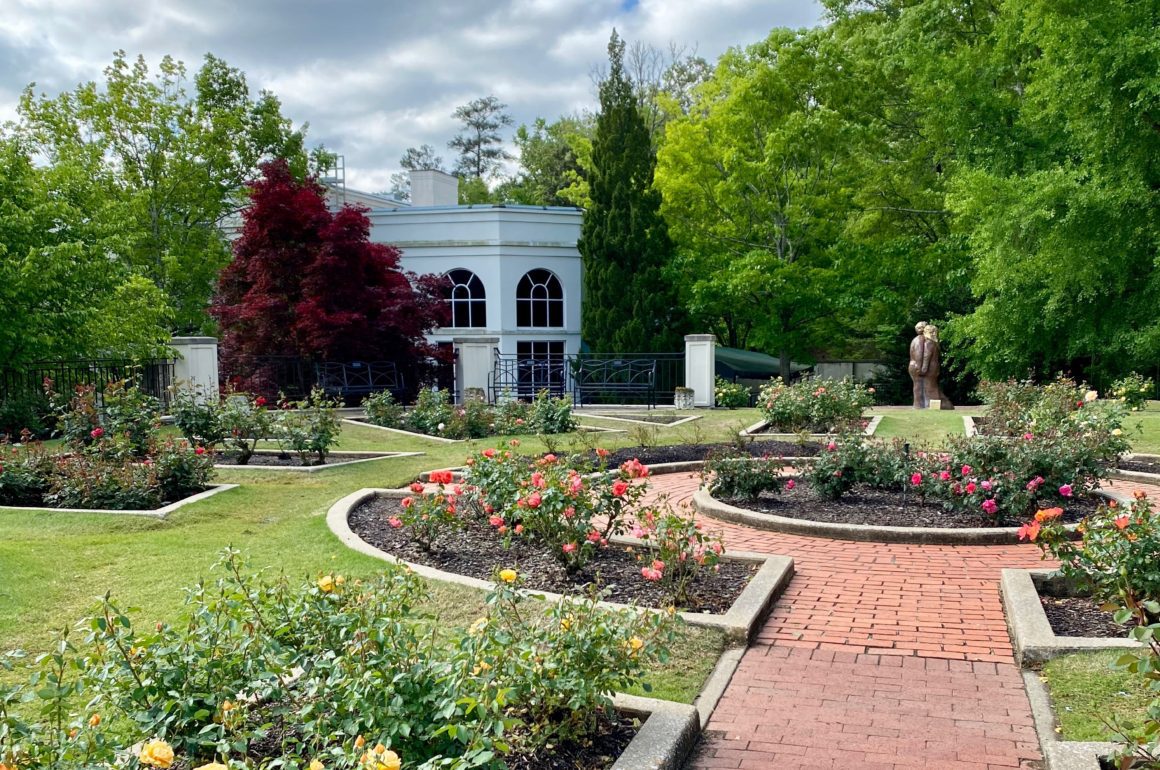The Perseverance of the Pantheon
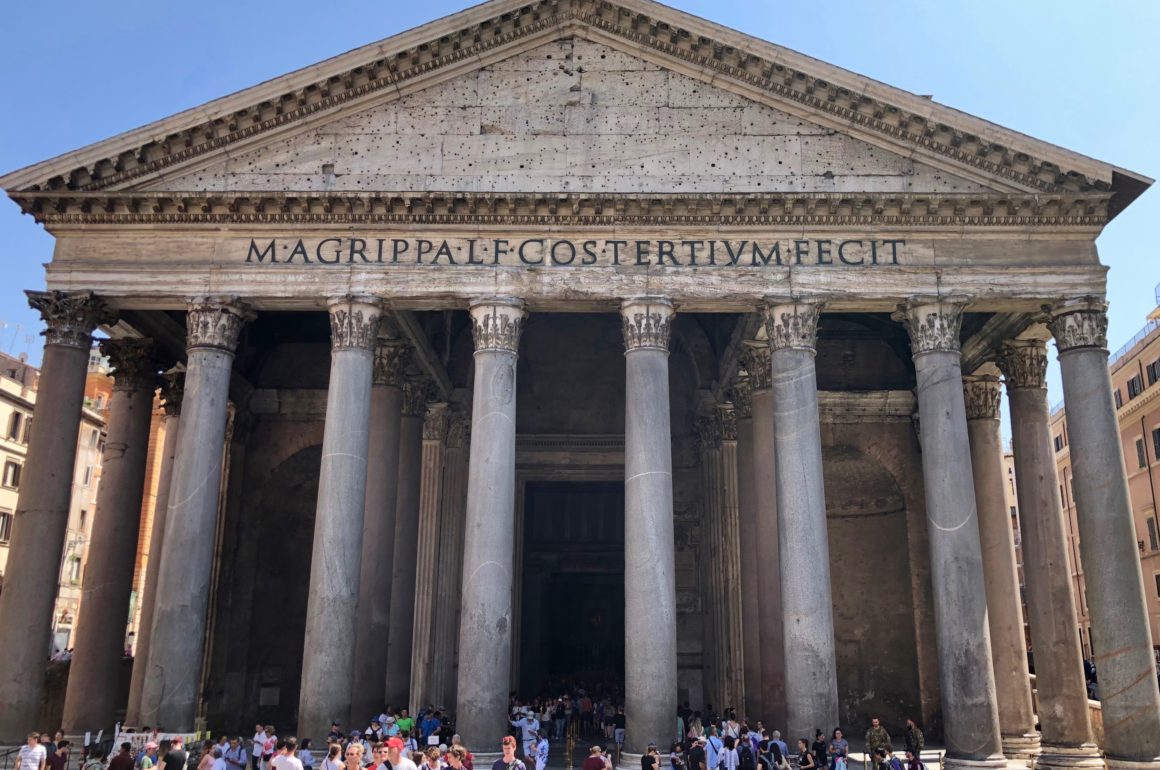
A worldwide pandemic. Masked people walking the streets. American civil unrest. Riots and violence. Images of anguish, death, and injustice cross our phone and television screens daily. At this point, one could make a very good argument that the world is going to hell in a proverbial hand basket.
Are we going to make it through all of this? I say YES, ABSOLUTELY! Yet, in these troubled times the Humble Huntress finds herself looking for some earthly symbol of assurance, stability and permanence.
There is one place I know that has inspired such ideals for nearly two millennia.
The Pantheon in Rome.
It has withstood plagues, wars, destruction, a fallen empire, religious upheavals, plenty of poor government leaders and many great ones as well. There it stands, a symbol of rebirth, endurance and perfection all wrapped up in one big glorious pristine piece of classical architecture.
It is hard to believe that the Pantheon looks pretty much the same as it did to your everyday Roman nearly two thousand years ago.
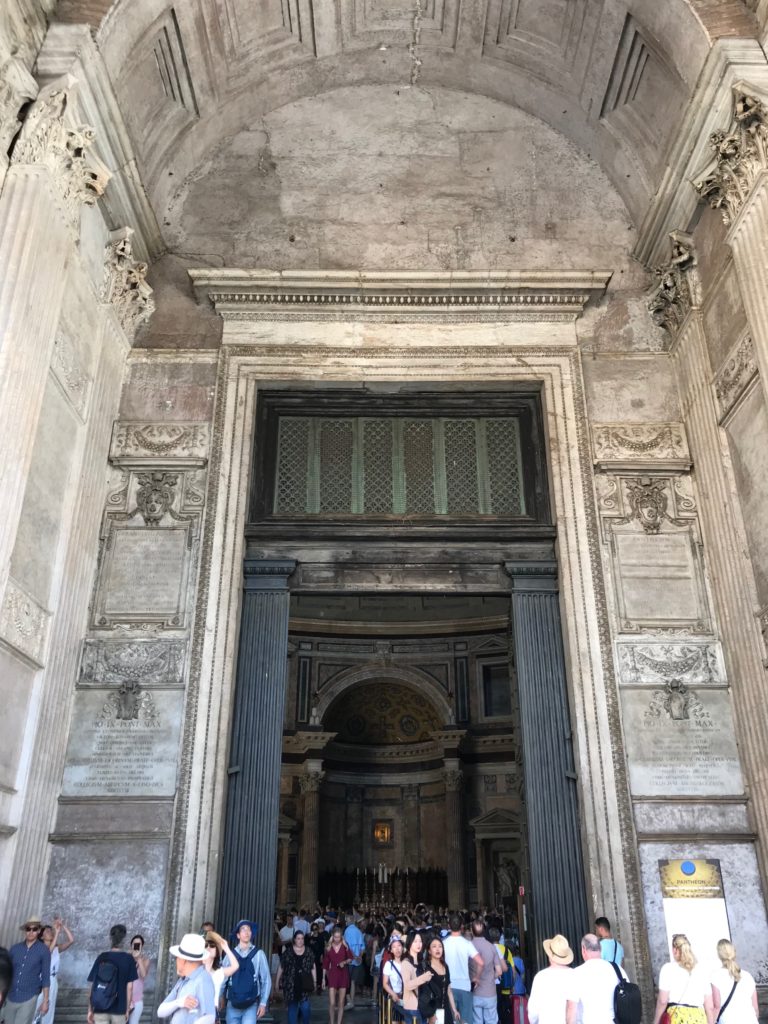
They stood on the original portico with those massive forty two foot high granite columns.
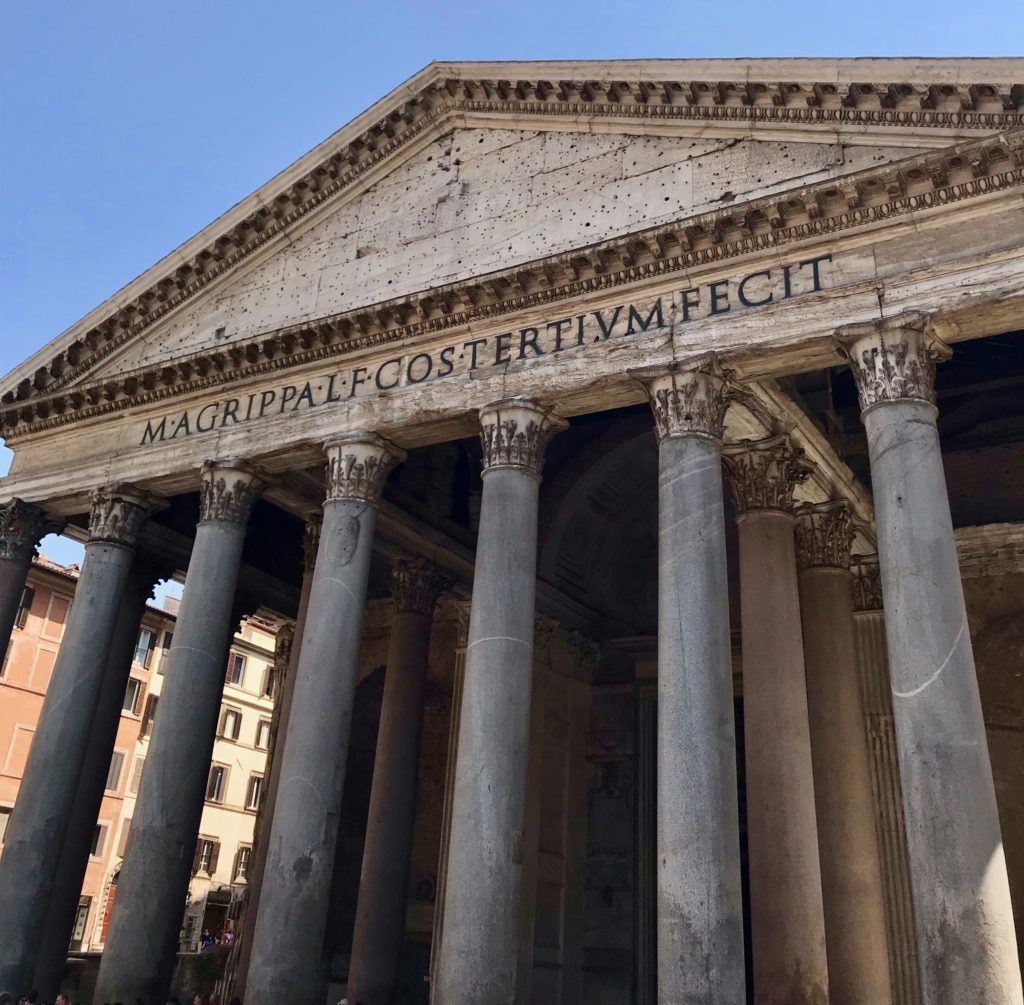
They entered through the same twenty four foot bronze doors. Their sandaled foot stepped onto the same piece of marble as your Stan Smith Addidas do today.
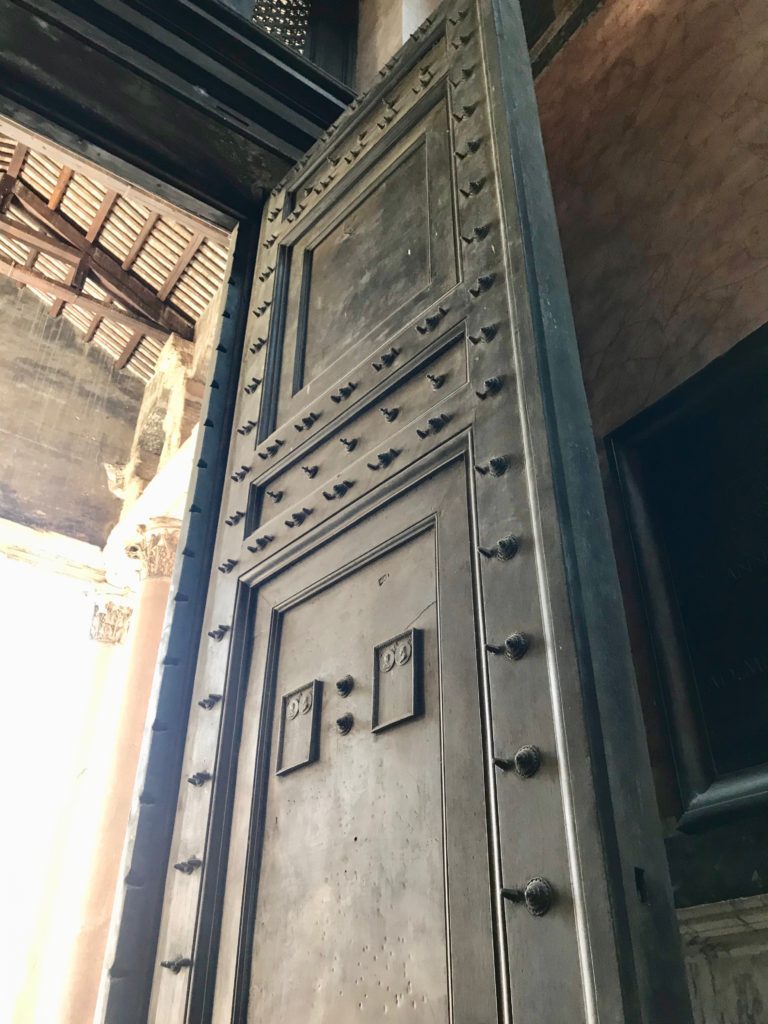
They entered a rotunda with its richly marbled chapels and niches.
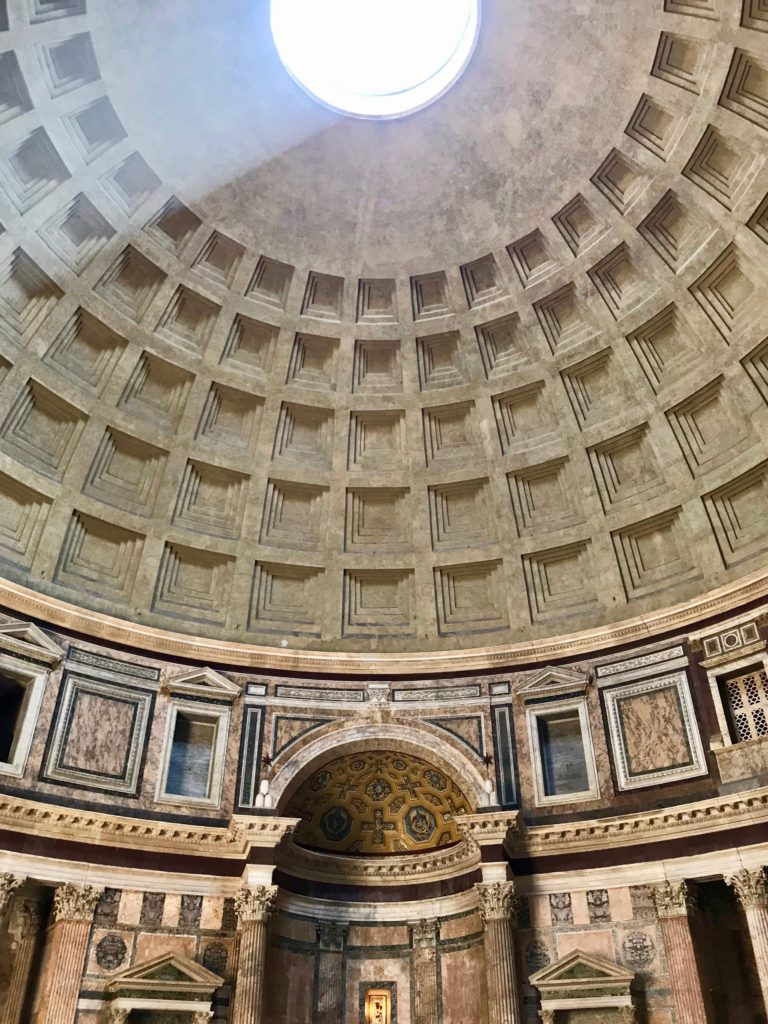
Topping it all off was what was then the largest unreinforced concrete dome in the world.
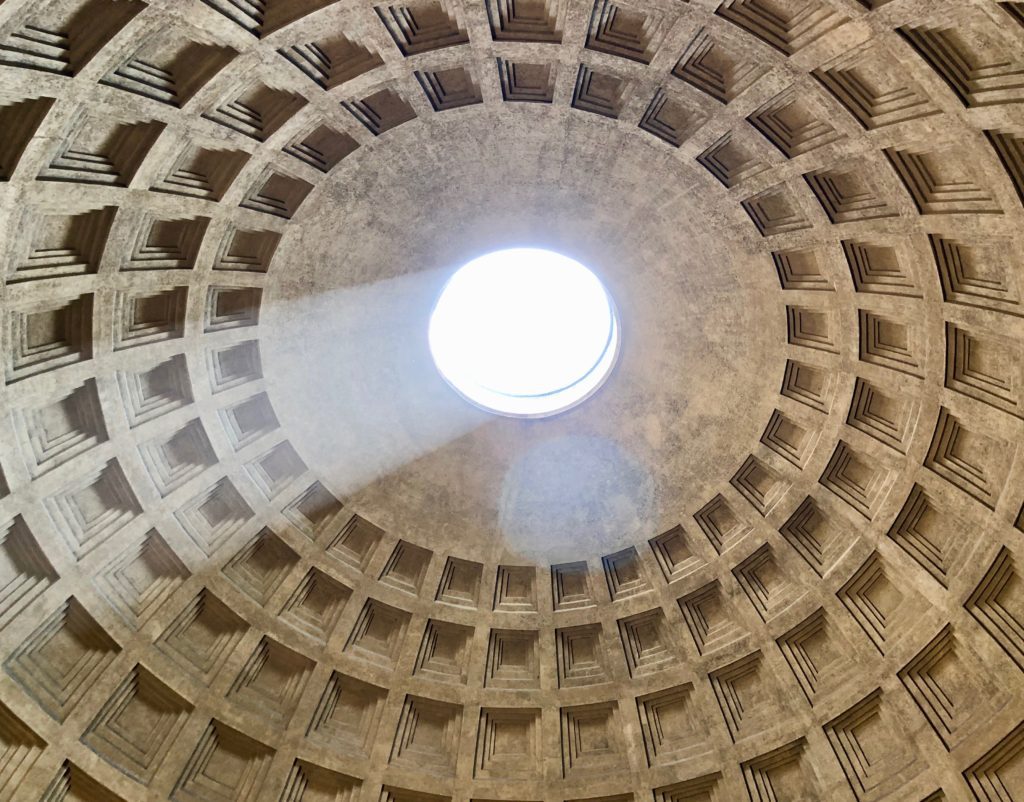
It still holds that record today. It is an engineering marvel.
In the center of the dome is an oculus, a single dramatic light source, open to the sky.
For me, it is that instant sense of wonder and beauty one shares with an ancient Roman that makes the Pantheon still feel alive to this day.
The light from the Oculus
As you move around the rotunda, you experience many dramatically different moods produced from the sun shining through the oculus.
From the side and looking up, the light appears mystical and hazy.
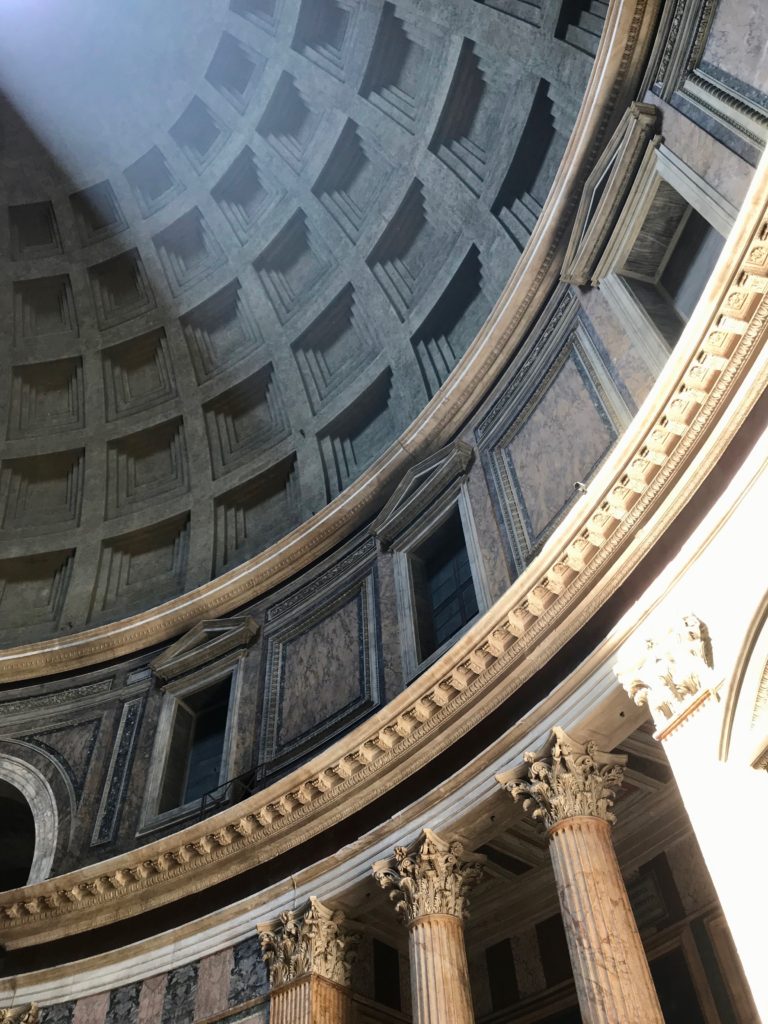
From across the rotunda, it becomes a brilliant beam that casts a spotlight on the niche.
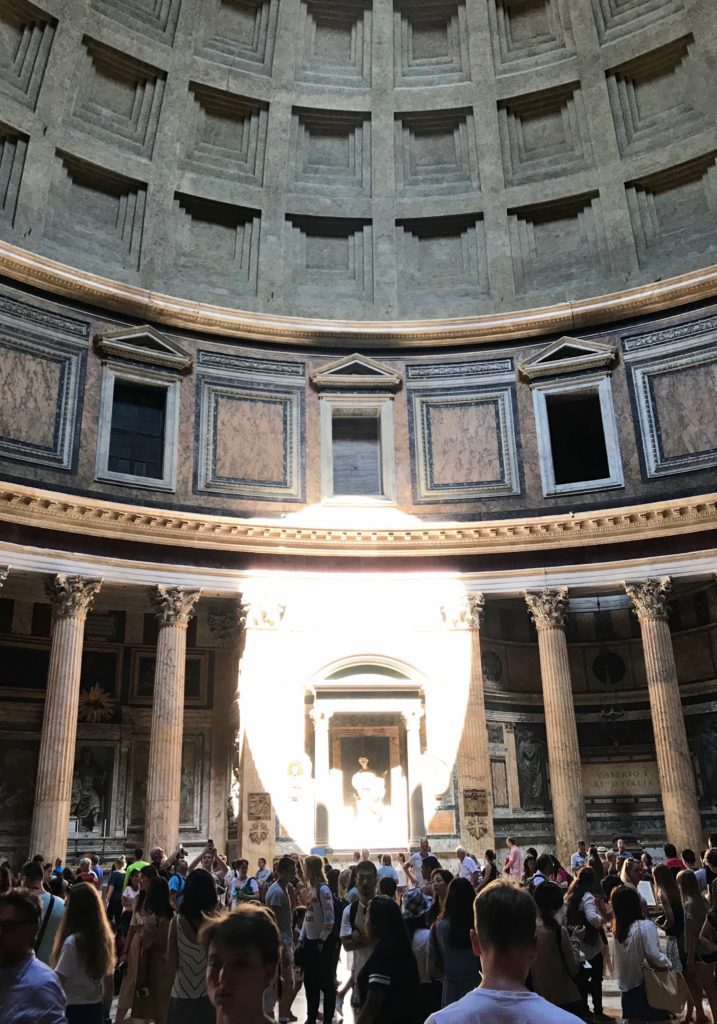
As you stand close to the statue, the light creates beautiful shadows and depth on the carving.
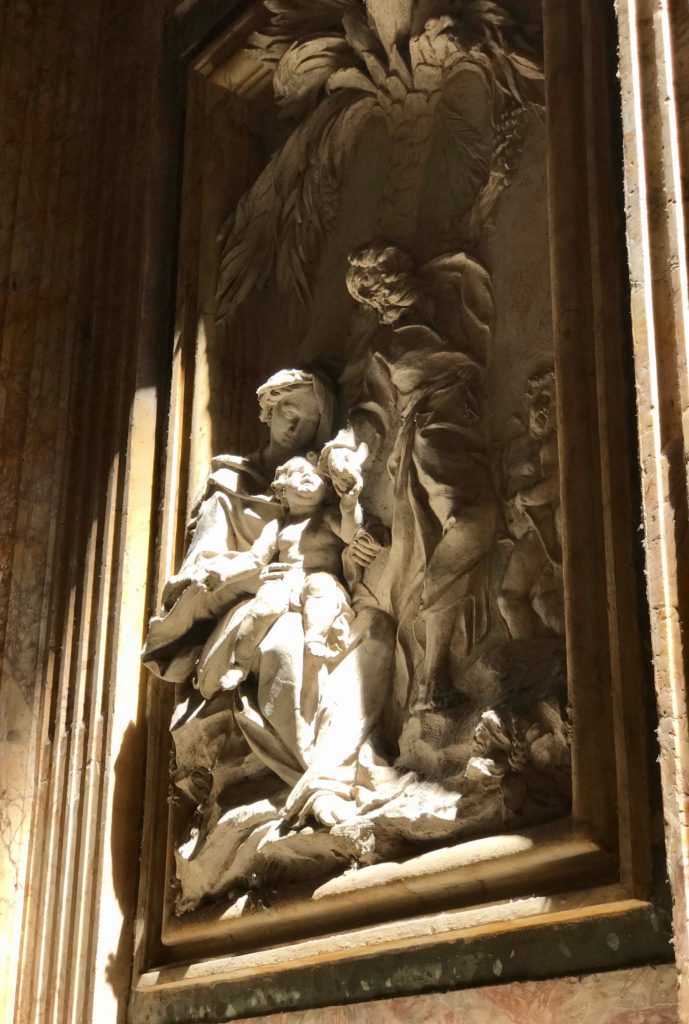
Timeless design genius.
Once a pagan temple, The Pantheon became the Basilica Saint Mary of the Martyrs in 609 AD. Yes, you can attend mass here, and proper demeanor in a religious house of worship is required from visitors.
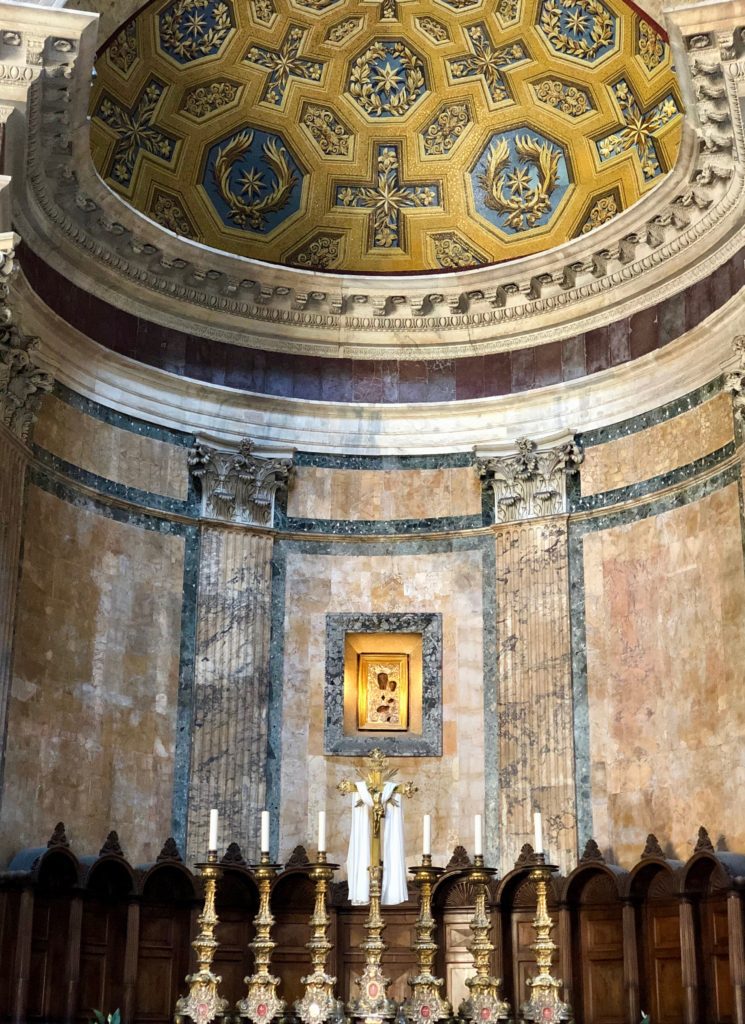
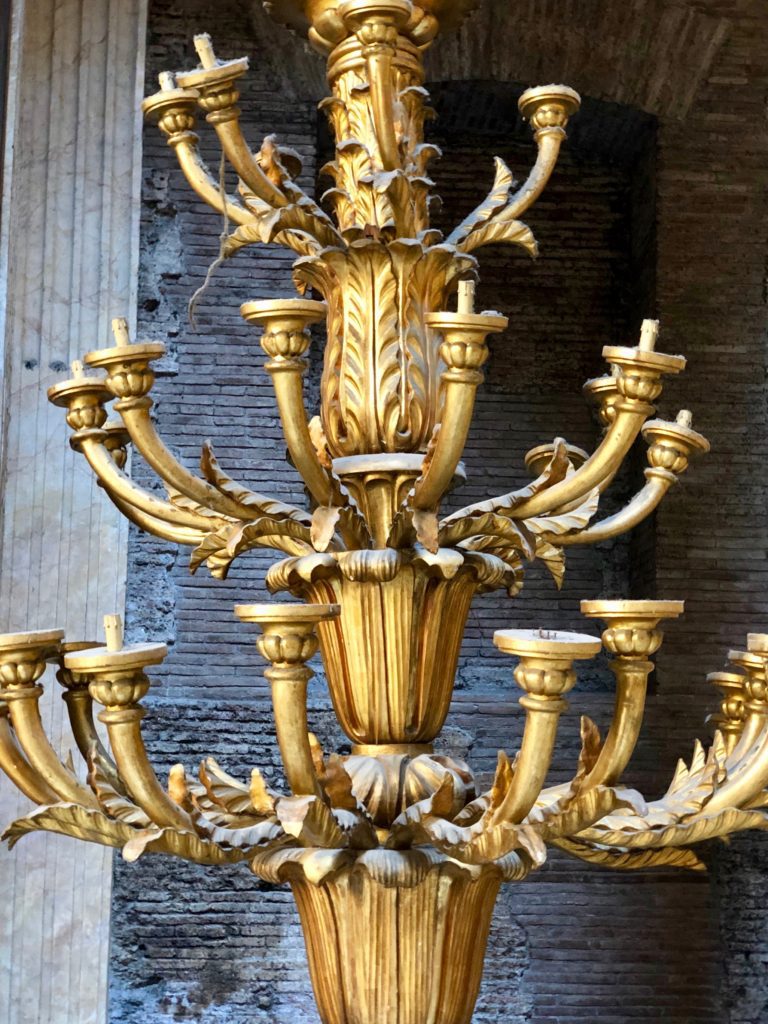
There are now Christian statues and several tombs of Italian kings.
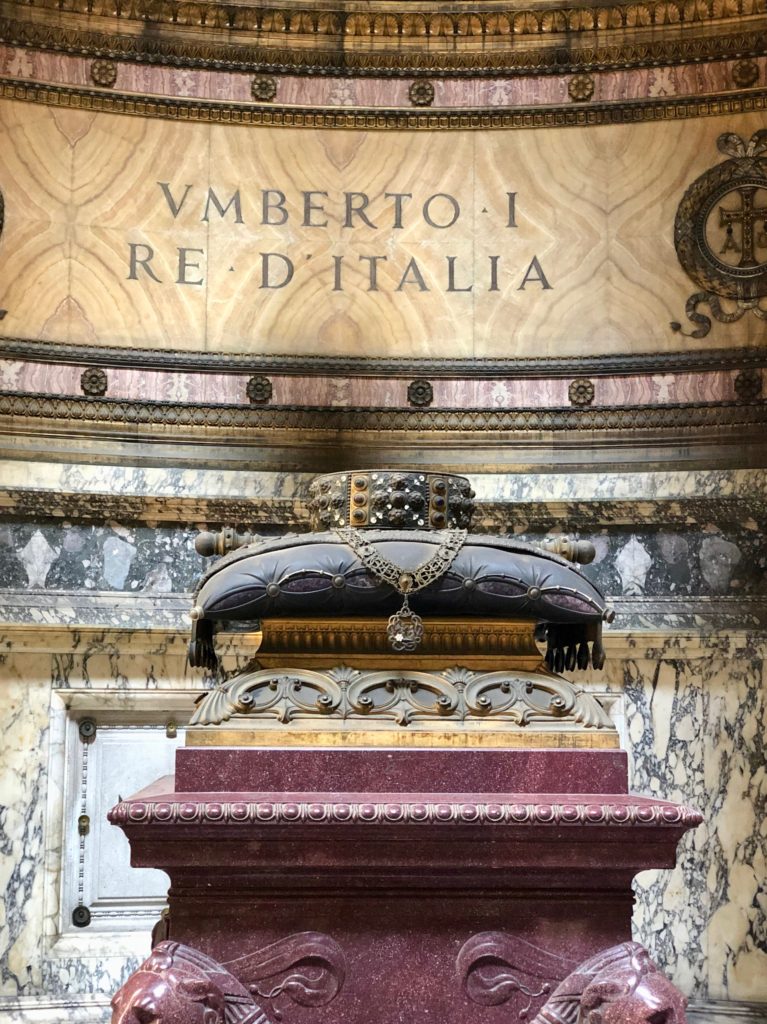
The famous Renaissance artist Raphael is buried there. They opened his tomb up in 1833 just to make sure.
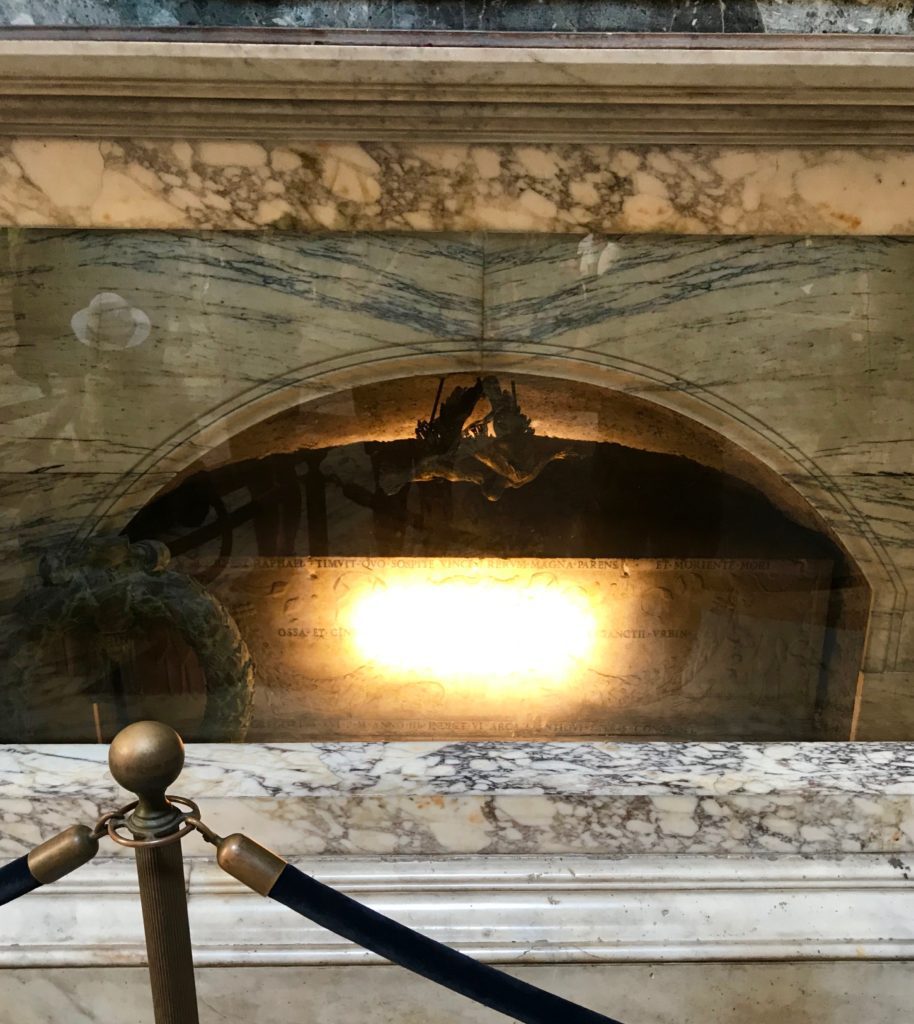
Yup, it was him.
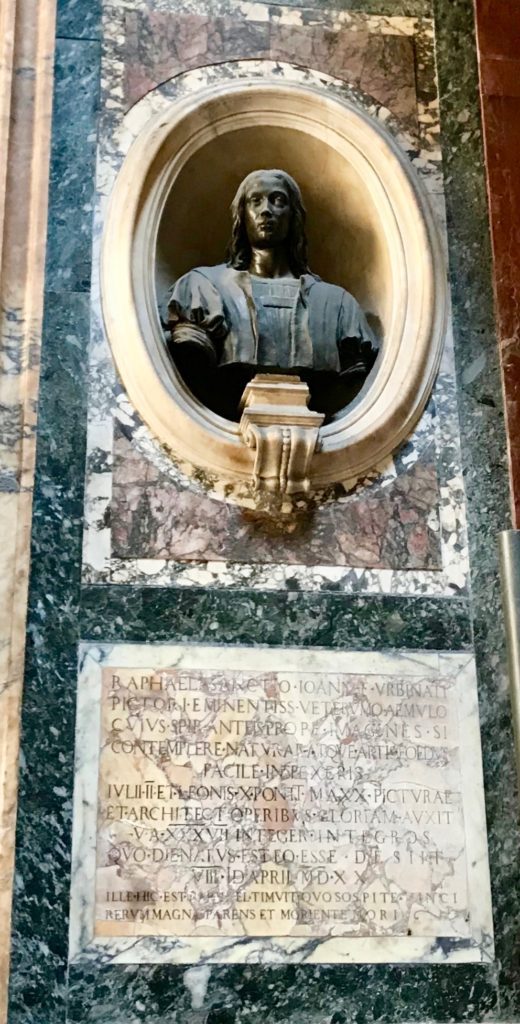
Emperor Hadrian, when asked how Rome would rebuild after a fire.
The pantheon had burned down twice before its present day appearance. When Emperor Hadrian had it rebuilt around 118 AD with that amazing rotunda you see today behind the original portico, it was only then that it realized its architectural perfection.
I think we can all draw a little inspiration from that, both personally and as a society.
We can not only achieve greatness after failing, even after failing multiple times. We can strive for a level of perfection that reaches far into the future.

Whoever goes slowly, goes safely and goes far.
The influence of The Pantheon inspired many future classical structures, including the Duomo of Florence, St. Peter’s Basilica, the US Capitol building, the Pantheon in Paris, the Jefferson Memorial and the Low Memorial Library at Columbia University, to name a few.
Armando al Pantheon
If you are lucky enough to go to Rome and see the Pantheon, you must go to the wonderful old school restaurant Armando al Pantheon and have some Cacio e Pepe, a classic Roman dish.
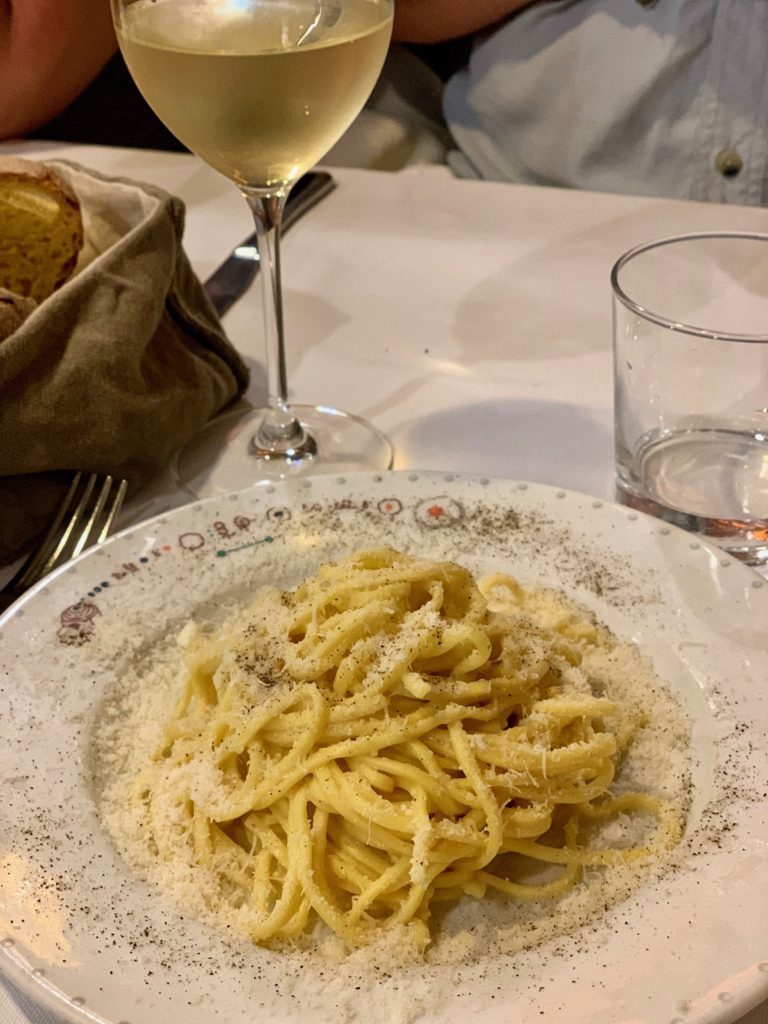
It is made from simple ingredients of pasta, cheese and pepper. Until travel resumes, I want to make it at home.
It is a miracle of purist perfection.
Like the Pantheon.
Let’s rebuild and lift each other up!
Pattie Jo



